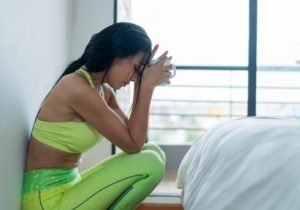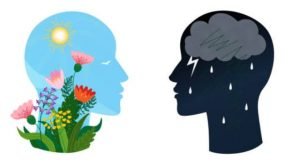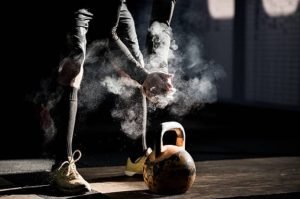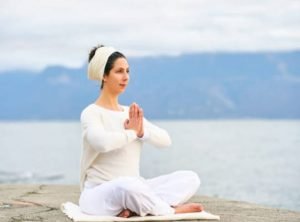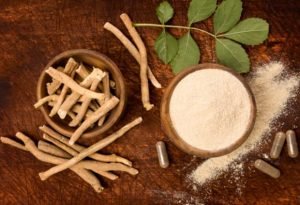
by admin | Jan 7, 2022 | Mind
Grains for Gains | Do You NEED Carbs?
Out of all 3 macronutrients (protein, fats, and carbs), carbohydrates are perhaps the most frequently misunderstood nutrient in food.
It has been given a bad name, but is it really as bad as some nutritional trends claim it to be?
In this article, we’re going to tell you the most important considerations about carbs, which will allow you to make them a functional part of your nutritional plan.
Hint: Carbs are not demonic
Essential Nutrients
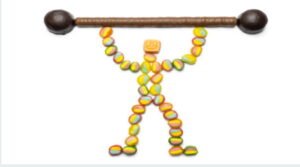
As you probably know, food contains essential nutrients, which the body needs to sustain healthy functioning, but cannot produce on its own.
Those essential nutrients are namely fatty acids, as well as amino acids, which come from dietary fats and dietary protein, respectively.
Amino & fatty acids regulate a number of functions and if consumed in suboptimal amounts, they can be the reason for suboptimal recovery and hormonal functioning.
HOWEVER… Out of the 3 macronutrients, only protein and fats are essential, meaning that carbohydrates are not really essential.
In other words, if the body needs glucose but doesn’t get it from food, it can produce its own, in a process called “Gluconeogenesis”.
Though non-essential, however, carbohydrates appear to be important for the goal of maximizing athletic performance.
The Glycogen Energy System

During intense physical performance, we use 3 main sources of energy to sustain muscular contraction:
- ATP (Adenosine triphosphate)
- Creatine
- Muscle glycogen
In essence, the main energy source is ATP, but since its stores are relatively limited and get depleted in about 5 seconds, the body needs alternative fuel sources, to regenerate that ATP.
As mentioned above, creatine and glycogen are the other two energy sources, which the body uses to regenerate ATP and continue the muscular activity.
Glycogen is basically the stored form of blood glucose, which in turn, is the end product of carbohydrate metabolism.
We store glycogen in two places – The muscles and the liver, with the first one being the storage with bigger capacity.
During the prolonged, intense muscular activity, the body quickly uses up ATP and creatine and starts utilizing muscle glycogen.
What this means for you, is that if your glycogen levels are low, your athletic performance output will suffer.
Modern-day trends like the keto diet suggest that you don’t really need carbs, but facts are facts – Glycogen is the only source of fuel that can be broken down into energy rapidly enough.
This is very important when the task at hand is to MAXIMIZE your output while training.
In summary, your body doesn’t really consider carbs essential, but they are the body’s preferred energy source and the best energy source for intense training activity.
Best Sources Of Carbs
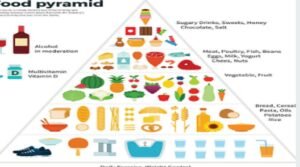
Now, of course, not all carbohydrates are the same and some may even be bad for you.
Our modern-day nutrition consists of many processed foods that contain refined carbohydrates.
Those refined carbohydrates have a really simple structure and the body digests them rapidly.
This, in turn, leads to sudden spikes and drops in blood glucose, often referred to as “sugar crashes”.
For this exact reason, your best bet is to rely on natural, unprocessed carb sources.
Here is a list of our top 10 best carb sources:
- White rice
- Brown rice
- Fruits
- Starchy vegetables
- Wholegrain bread
- Wholegrain pasta
- Sweet potatoes
- Regular potatoes
- Oats
- Quinoa
Now, not all of the above will suit your taste buds, which is why you are best off experimenting and finding out the foods you like and can eat consistently.
Once you find those, make them a part of your regular meals and you are well off on your way to optimal physical performance!
Conclusion
Unlike protein and fat, carbohydrates are non-essential for the body, BUT they are the preferred and most efficient, rapid energy source for intense muscular activity.
This is why, including a reasonable amount of carbohydrates in your daily nutrition, is important!
Ultimately you should rely on whole food, unprocessed carbohydrate sources, such as rice, quinoa, potatoes, fruits, and starchy vegetables.
Do you have questions about carbs? Feel free to drop them below!

by admin | Jan 7, 2022 | Fitness
Age Is NOT A Terminal Sentence
If you’ve ever tried to talk your dad into going to the gym with you, it is likely that the response was something along the lines of “I’m too old to do any physical activity”.
Well, people of previous generations have grown with the belief that age is a terminal sentence that inevitably deprives you of the ability to do anything body-care related.
And while this is relevant and valid for individuals who believe it is so, it is not really the ultimate truth that no one can escape.
Let’s Face The Facts…

If you are of an older age and don’t have any severe physical/health issues, here are some facts for you:
- You can still exercise
- You can still eat well
- You can still treat your body right
In most cases, refusing to do those is simply the end result of giving up, or in other words, it is your mind that thinks age is stopping you.
Self-Care In The Older Years

It is true that there are certain physiological and mental changes that occur as we age, but one thing still remains true – You can CHOOSE to take actions and adopt health-nourishing habits.
Here are our best tips for adults who are looking to improve their lifestyle and habits:
#1 Exercise!
It appears that the older we get, the more muscle mass we lose and the less active we become.
NEvertheless, engaging in low & high-intensity physical exercise, is one of the best anti-aging therapies you can have during your older years!
Exercise and especially resistance training can help you maintain your muscle mass over the years, leading to significant improvements in metabolism & how you look visually.
Since the body is more prone to injuries during the older years however, it is a good idea to mix low and high intensity training and avoid overexertion.
Think of it this way – What can you do for your body in the next 10 years, given that you are 55 years old now? 10 years is a lot of time and it will certainly yield results if you put in the work!
#2 Eat well

As the older age steps in, people become more likely to ditch their body-care habits altogether.
Whether you are 20 or 55 however, one thing remains true – Your body needs certain essential nutrients, in order to sustain healthy functioning of all bodily components and systems.
For this reason, it is a good idea too be mindful of your nutrition, even at an older age.
Include quality animal products, fish, fruits, vegetables in your daily nutrition plan and try to eat the least amount of junk food possible.
Quality whole foods will keep you satiated and will in turn make it much less likely for you to overeat and gain excessive weight.
What does this mean? Better health and body composition even in your older years!
#3 Manage Stress
Oftentimes, people are rendered incapable of giving their bodies what they need not just by age, but by the progressively growing stress factors over time.
Stress management is an important aspect of body/self-care and your anti-aging habits.
How do you do that?
Well, there are many self-help books, but it mostly comes down to one very important realization…
That is namely the fact that most stress responses are AUTOMATIC – You don’t choose to be stressed, stress takes over you.
This is the EXACT moment when you have to think outside of the box and ask yourself questions like:
“Is this worth my time and health?”
“Is there an adequate way of dealing with this without feeling stressed?”
“Is this going to matter in 5 years?”
“Why does this have to make me feel this way?”
All of these questions can lead to certain behavioral models that will guide you to the right decision in the situation and therefore, reduce stress.
Remember, internal self-regulation is important!
Conclusion
Contrary to popular belief, your older age is not a terminal sentence that you can’t escape.
Even more so, the fact that certain changes happen in the body during your older years, should push you to become more aware of your habits and improve them, in order to nourish your body.
Remember that as long as you are alive, you have the opportunity to take powerful decisions and choose actions and habits that will ultimately improve your quality of life.
Stay active, eat well, rest enough and manage your stress and you will be surprised how fit you can look during your older years!

by admin | Nov 22, 2021 | Fitness
INTRODUCING TUI NA MASSAGE
With so many different types of massage accessible nowadays, it’s easy to become confused about which one is which and what they’re all helpful for.
The great news is that Tui Na massage, like most other forms of massage, works by rubbing, kneading, or applying pressure to your muscles to achieve a therapeutic result. Tui Na differs however from other forms of massage in that it is based on Traditional Chinese Medicine (TCM). Therefore its method is slightly different.
As a TCM modality, Tui Na is said to have originated in ancient China some 5,000 years ago. Today, it is regarded as a primary kind of medical therapy in China and the foundation for other therapies that exist in Western society, such as shiatsu and acupressure. It is very commonly used by acupuncturists as well. It is very similar in the way that acupuncture targets specific acupoints, but practitioners use fingers instead of needles to apply pressure to stimulate points.
TCM views your body as a whole, not as discrete parts operating independently, but as a continuous organism that is inextricably linked not just to itself but also to the cosmos and all that exists within the universe. It is truly holistic.
A Tui Na massage focuses on your body’s same muscles and regions as conventional massages, but you can see how the holistic approach immediately distinguishes the therapy.

Furthermore, TCM is characterised in part by meridians (energy and nutrition channels) and theories such as the Theory of Five Elements, which aid in determining your specific diagnosis for treatment reasons. All of this is taken into account during this specific massage.
Suppose you experience discomfort in your neck and shoulders. In that case, one meridian that is likely to be damaged is your ‘Gall Bladder’ meridian (‘Gall Bladder’ is noted here to differentiate from the scientific description of the organ itself). Knowing the TCM meridians will alert your Tui Na practitioner that a few points on your feet or lower legs may also benefit the therapy.
Also, if your practitioner is familiar with the Theory of Five Elements, he or she may advise you to utilise a point or two on your wrist and hand. Other forms of massage would not necessarily address the same spots or utilise the same logic.
Tui Na massage is not inherently superior to other massage techniques; it is just applied differently. TCM massage is frequently utilised as an adjuvant to acupuncture, cupping therapy, Qi Gong, and/or herbal medicine in Western civilisation. Therefore your Registered TCM Practitioner may incorporate some Tui Na in your treatment. Be careful to locate a trained therapist who is educated about the various TCM techniques. As with everything, Tui Na can be carried out incorrectly and it is important to experience it with a trained professional to remain safe and reap the correct benefits.
SO why not try it out, I am sure you are going to love it
This post is for informational, educational and entertainment purposes only and does not replace therapy, treatments or advice from a registered or licensed medical doctor.

by admin | Nov 22, 2021 | Fitness
Difference between tai chi and qi gong
OFTEN THOUGHT OF AS THE SAME BUT ACTUALLY QUITE DIFFERENT, YET HAVING AS MANY BENEFITS AS ONE ANOTHER. THEY CAN BE COMBINED FOR GREAT EFFECT.
QIGONG can be thought of as a movement you do for a certain situation, where
TAI CHI is a series of movements that work on the entire body in a flowing sequence.
Qi Gong is mind body spirit practice, translated as breath work or energy work. It improves mental health and physical health by the integration of posture, movement, self-massage, breathing techniques, sound and focused intent.
Tai Chi is often described as meditation in motion as it is a slow motion low impact exercise which goes through a series of motions without pauses. As you move you breathe deeply and naturally focusing your intention on your bodily sensations. It improves balance, flexibility, calm, relaxation, upper and lower body strength, as well as the core muscles of back and abdomen.
Balance and benefits
Balance development is one of the first benefits that trainees notice while practicing Qigong or Tai Chi. Through the practice of these ancient skills, both the young and elderly may drastically enhance their balance. The five basic elements of balance are one of the first subjects to be taught.

The following are the five principles:
- Vertical Line Inside/within
- Arrangement of the legs
- Arrangement of the waist
- Opposite limbs cooperate
- Only move the insubstantial
These five principles apply to our Qigong and Tai Chi forms and how we should move in our daily lives.
Our “vertical line within” is the initial premise. Our top centre of the head collaborates with the sky above, while our bottom centre of the legs collaborates with the ground below. With these two exact opposites working together, our spine remains long and healthy. Despite its simplicity, this one principle may have an instant and significant influence on your physical balance.
At the very ends (top and bottom) of this “vertical line” are Bai Hui and Hui Yin. In many Tai Chi and Qi Gong courses, the Bai Hui acupoint is the “top centre of the head,” while the Hui Yin acupoint is the “centre between the legs.”
Our spine is long and robust when Hui Yin searches the ground below, and Bai Hui ascends to the sky above. Our vertebrae are relaxed as our spine is extended. We reduce the possibilities of diseases and injuries manifesting in our spine due to stress and tension building up and staying in our spine.
We want to feel as though Hui Yin searches the ground and Bai Hui ascends to the sky as we go about our everyday lives so that our spine stays long and in a healthy, comfortable posture. In this posture, we may release any tension already living in our spine and prevent any new tension from forming there.
Furthermore, this line must always be vertical. We never want to shift our spine forward, backward, left, or right to maintain balance.
Tilting the spine exerts undue strain on particular vertebrae while also having a detrimental influence on other body regions.
This is shown by the oft-repeated advice to “raise with your legs, not your back.” When you raise your legs, keep your spine straight. When you lean forward to pick something up, your vertical line is broken. Your spine is twisted and in a susceptible position to injury from the effort of lifting. So, while you go about your everyday activities, try to keep that vertical line within.
This post is for information, educational and entertainment purposes only and does not replace medical advice, therapy or treatment from a licensed/ registered doctor.

by admin | Nov 22, 2021 | Mind
Marvel the wonders of Reflexology
Reflexology is useful to every system in the body since it works to put the body in a state of wellness. It has actually been revealed to alleviate lots of typical pregnancy problems consisting of headache, queasiness, backache, drowsiness, tiredness, irregularity, inflamed ankles, and digestion issues. A lot of professionals have actually been offering this holistic method for the majority of cases to clients to deal with stress and anxiety.
From adverse effects of chemotherapy to discomfort and anxiety, symptoms related to cancer and its treatment can stress one’s lifestyle nearly as much as the illness itself. With no equipment required nor intrusion of personal privacy these are a couple of the simplicities of reflexology which can be used in a medical environment that makes it a practical complementary treatment.

Reflexology is a safe, non-invasive, and efficient treatment for everybody that can utilise it and it ought to be utilised throughout an individual’s life time.
In a society that relies greatly on chemically packed prescription drugs for treatment, reflexology is absolutely standing out there proud with a great deal of supporters stating it as an efficient treatment option.
In 2006, a group of medical school scientists at University of Udine, Italy, reported favourable outcomes for the usage of reflexology foot massage to deal with stress and anxiety in clients undergoing cancer therapy for a 2nd or 3rd round of chemotherapy. And, in yet another current research study, to deal with stress and anxiety for and lung cancer clients, the reports stated that the clients experienced relief after reflexology.

Professional female masseur giving reflexology massage to woman foot.
Reflexology is an art because much depends on how masterfully the professional uses his or her understanding, and the connection that happens between the professional and the recipient. The objective of reflexology is to deal with the client and illness as a total entity, recovering the body and integrating, mind and spirit.
Reflexology is likewise great for individuals who are recuperating from surgical treatment due to its favourable stimulating result on the nervous and immune systems. Numerous individuals with health problems such as allergic reactions, acid reflux, migraines, pre-menstrual syndrome (PMS), menopause, sleeping disorders, fertility issues, and even arthritis have actually been assisted enormously by reflexology treatments.
Numerous research studies have actually been done in relation to the efficiency of this wonder technique called Reflexology. Reflexology is the practice of strategically using pressure to locations of the feet and hands as they correspond with particular body organs.
Research studies have actually likewise revealed that clients that got reflexology treatment after surgical treatment experienced far less discomfort than the clients that took pain relievers alone. Reflexology was revealed to be more efficient than catheterisation in clients with retention of urine after surgical treatment.
I myself have experienced reflexology and can honestly say it’s one of the most relaxing and therapeutic therapies out there. It is no surprise that it consistently tops the polls each year as the most popular holistic therapy requested.
















